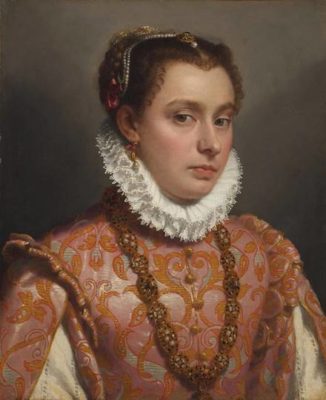By Sarah Cascone
NEW YORK (Artnet) — The walls of the Frick Collection’s stately Gilded Age mansion in New York are lined with distinguished Old Master portraits, many depicting the kings, knights, and patrons of the Italian Renaissance. Now, the museum has made an intriguing new addition by acquiring its first painted portrait of a woman from the period.
Titled “Portrait of a Woman” (ca. 1575), the depiction of an auburn-haired lady is the work of Giovanni Battista Moroni. The estate of Assadour O. Tavitian, a longtime board member who died in 2020, donated the work to the museum following its appearance in the 2019 exhibition “Moroni: The Riches of Renaissance Portraiture.” It is also the first work by the artist to join the Frick’s collection.
Tavitian was a philanthropist known in the Berkshires for his generosity and commitment to several local organizations. Considered a patriot by the Armenian Church for his contributions to Armenia, he had lived in Stockbridge since the mid-1990s, according to Bob Jones, of Lee, who served as the caretaker of Tavitian’s property on Prospect Hill Road for 18 years. He also owned a townhouse in New York City that housed a large art collection.
Tavitian, the co-founder of SyncSort, one of the first software development companies to emerge after IBM unbounded its software, served on the boards of the former Berkshire Theatre Festival in Stockbridge, the Austen Riggs Center in Stockbridge and The Clark Art Museum in Williamstown.
In 1995, he established the Tavitian Foundation, which provides scholarships to students of Armenian and Bulgarian origin and sponsors projects that focus on the development of the Republic of Armenia. Through his foundation, he established the Tavitian Fellows Program at the Fletcher School. That program provides a six-month training program in public policy and administration for Armenian government officials, and it has over 350 alumni.









